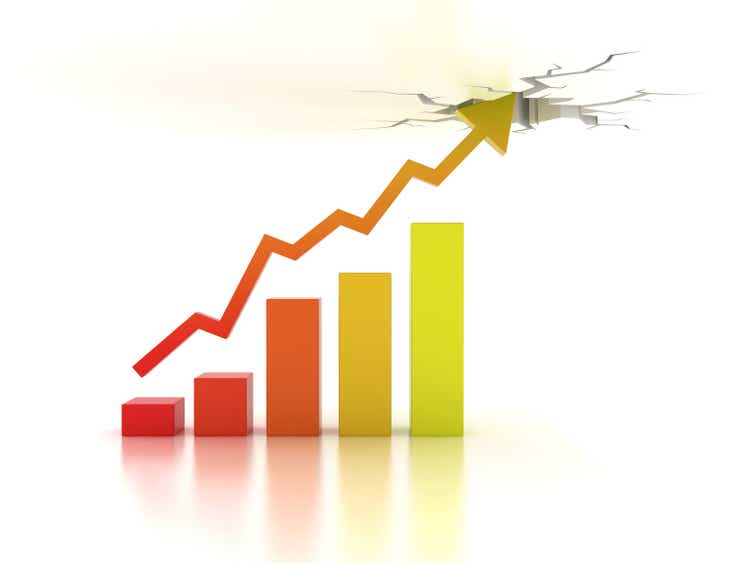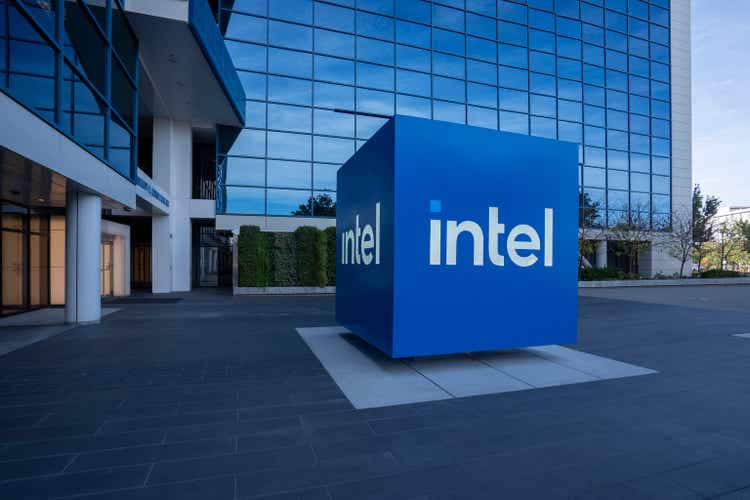Tesla ( TSLA 3.29% ) stock hit a new record high shortly after President Donald Trump's election win last November because investors thought a friendlier regulatory environment could help the company bring its autonomous robotaxi and humanoid robot to market more quickly. CEO Elon Musk thinks these product platforms will help Tesla become the world's most valuable company one day.
In fact, Musk believes Tesla could eventually be as valuable as the next five largest companies combined. Today, those companies would be Apple , Microsoft , Nvidia , Alphabet , and Amazon , which have a combined value of $11.8 trillion.

But Tesla stock is currently heading in the wrong direction. It's down 47% from its recent all-time high, and a series of headwinds are plaguing its core business, which could lead to a further decline of 50% (or more) from here. Tesla's electric vehicle sales are plunging Although Musk might be focused on autonomous vehicles and robotics, electric vehicle (EV) sales still make up 72% of Tesla's total revenue -- and unfortunately, they are sinking right now.
Sales fell by 1% during 2024 to 1.79 million cars, but the decline accelerated to 13% in the first quarter of 2025. The Q1 decline in deliveries sent Tesla's automotive revenue tumbling by 20% year over year, and its overall net income (profit) plunging by a whopping 71%.
There are several layers to the company's problems: Competition is ramping up in the EV space with numerous low-cost producers entering the market, and consumers soured on the Tesla brand this year because of Musk's involvement in politics. On the competition front, Tesla is up against China-based EV producers like BYD , which is capable of selling cars for as little as $10,000 in its domestic market. BYD is also making its way into Europe, where it could snatch some of the market share Tesla has spent years accumulating.
On the political front, Musk has spent a lot of time running the Department of Government Efficiency (DOGE), which was established to reduce wasteful spending in the U.S. government to bring down the national debt.
Musk and his team faced criticism for laying off government workers and slashing funding from programs like the U.S. Agency for International Development (USAID), to the point there have been regular protests at Tesla dealerships around the world.
Here's the good news: Tesla is planning to roll out some lower-cost EVs of its own later this year, and Musk just told investors he plans to spend less time at DOGE starting from May, so he can focus more on the EV maker instead. These are important steps toward repairing some of the damage Tesla has suffered over the past few months. Meaningful revenue from autonomous driving and robotics could be years away Tesla's Cybercab robotaxi is designed to autonomously haul passengers around the clock within a ride-hailing network, creating a new revenue stream for the company.
However, it isn't expected to go into mass production until next year, and it could take some time after that before it brings in meaningful amounts of money. Plus, Tesla's full self-driving (FSD) software still isn't approved for unsupervised use on public roads, and the Cybercab can't operate without it. This places Tesla behind competitors like Waymo, which is already completing 250,000 paid autonomous trips every week.
With that said, Tesla could leapfrog Waymo when FSD wins regulatory approval. The unsupervised version of the software will be compatible with most of Tesla's passenger EVs, so the company will have a fleet of millions of customer cars which could start earning revenue for their owners (and Tesla) by offering autonomous ride-hailing services. Plus, Musk says the Cybercab is around 80% cheaper to produce than Waymo's vehicles, so Tesla will have a serious pricing advantage when the robotaxi eventually achieves scale.
Then there is the Optimus humanoid robot. Musk says Tesla will produce thousands of them this year to perform tasks in its own factories. But he thinks the company could produce over 1 million annually by 2029.
Humanoids like Optimus will be capable of doing dangerous or repetitive jobs that humans don't want to do, but they will also be useful as household assistants. As a result, Musk has previously told investors there could be more humanoid robots than humans by the year 2040, which is why he predicts Optimus could bring in a staggering $10 trillion in revenue over the long term. Tesla stock is extremely expensive right now Tesla could become the most valuable company in the world one day on the back of FSD, the Cybercab, and Optimus.
But in the here and now, it faces a serious valuation problem. Based on Tesla's trailing 12-month earnings per share (EPS) of $1.74, its stock trades at a price-to-earnings (P/E) ratio of 148.
6, making it a whopping five times as expensive as the Nasdaq-100 index which trades at a P/E ratio of 27.1. Moreover, Tesla is materially more expensive than the five companies it hopes to surpass one day: NVDA PE Ratio data by YCharts.
Simply put, Tesla's valuation will be a roadblock to further upside in the near term. Even if Musk is right about the company's potential in the long run, that isn't necessarily a good reason to pay such a hefty premium for the stock today. Remember, meaningful revenue from autonomous driving and Optimus could be years away, and if EV sales continue to shrink in the meantime, Tesla could face spiraling earnings which will make its stock appear even more expensive.
Therefore, even though Tesla stock is already down 47% from its record high, there is a looming risk it could suffer a further decline of 50% (or more) to bring its valuation closer to those of its big-tech peers. It would have to decline by 76% just to trade in line with Nvidia's P/E ratio, for example, and that is one of the fastest growing companies in the world..
Business

Elon Musk Thinks Tesla Will Become the World's Most Valuable Company. Here's Why Its Stock Could Decline by 50% (or More) Instead
















